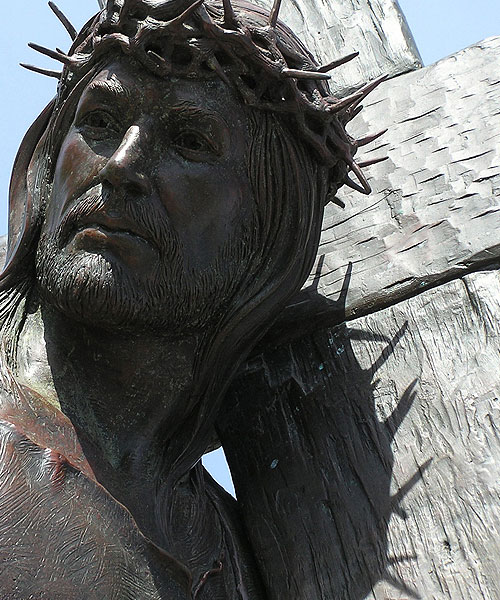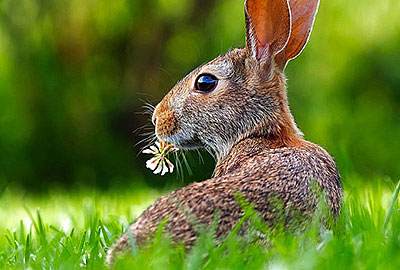In modern times, Easter is celebrated by Christians as the day Jesus Christ came back to life after having being crucified the previous Friday. However, like many holidays, the origins of Easter and many of the traditions associated with the holiday have their roots in ancient pagan and pantheistic rituals and celebrations. Indeed, because Easter is a springtime holiday and many cultures and traditions celebrate the arrival of spring, the modern celebration of Easter and the traditions associated with it are derived from many of the cultures and traditions from the Romans, Christians, European Pagans and Jews.
Ostern or Eostre
The history of Easter reveals ancient pagan roots; this holiday was not always a Christian-based holiday. It is believed that the term Easter is literally derived from the term Eostre, the name of a Teutonic feminine deity. The latter goddess is a fertility goddess, a goddess of the spring, and the hare is sacred to her. Others believe that the word Easter is derived from hebdomada alba, a Latin term meaning white week. The latter reference is believed to be associated with the act of putting on white attire when being baptized and served as a reference for the week that Easter occurs in as well.
The association of Easter practices with the pagan goddess Eostre makes clear some of the traditions that are carried out today. The goddess Eostre was honored toward the end of the month of March, right around the time of Spring Equinox. Jakob Grimm, the author of “Deutsche Mythologie,” explains that a goddess similar to Eostre was at one time mentioned by the Venerable Bede. Dr. Jonathan Young, a well-known folklorist, further asserts the mythic past associated with the holiday; the month of April was once identified as Ostaramoanoth or Eostremonat; this times the month of April immediately after Spring Equinox. Eostre is also sometimes identified as Ostara, a word rooted in the term “east,” which literally means “dawn.” Celebrations honoring Ostara or Eostre are ancient, and the holiday came to represent the cycle of life, death, and rebirth.
Since the holiday of Easter is about renewal and new beginnings, one should not be surprised to see people wearing brand new attire at Easter parades; this is done to reflect the notion of doing away with what is old and bringing in all that is new and fresh. Eggs are symbols of fertility, of birth, and of renewal too, and this could be why many people still paint eggs in lovely pastel colors every year. Meanwhile, the Easter Bunny may be rooted in the ancient hares held sacred to the great goddess Eostre or Ostara.
Most scholars agree that the word Easter is derived from the Scandinavian word Ostara and the Teutonic words Ostern or Eostre. Originally, pagan Europe celebrated what is now called Easter on the vernal (spring) equinox. The celebration was dedicated to the goddesses of fertility. Many of the traditions that we associate with Easter, like eggs and bunnies, clearly have nothing to do with the Christian holiday, but they were integral parts the pagan celebration. For example, rabbits were a symbol of fertility, for obvious reasons, to the ancient pagans. Eggs, also a symbol of fertility, were also originally painted by the ancient pagans to represent the colors and light of spring. These eggs were given as gifts, tokens of good luck and affection. The tradition of Easter Egg roles and hunts also began in these celebrations to the fertility goddesses.
The Ancient Romans
The Ancient Romans celebrated many holidays throughout the spring. One of special interest as it relates to the modern celebration of Easter festivals was part of a nine day festival dedicated to the god Mars, the god of war. Specifically two rituals were clearly adopted by Christians who made the traditions part of their celebration of Easter. One of those traditions involves priests carrying palm trees down the street as a form of blessing. This day of the festival to Mars was known as the Festival of the Trees. It is the precursor to the modern Christian celebration of Palm Sunday, the Sunday that precedes Easter Sunday. The day now known as Good Friday originated from the rituals performed by the Romans on the last day of this festival. The Roman’s called this day the Day of Blood. On this day, people would break the fast that had been taking place for the previous nine days. People who worshipped the goddess Cybele would ritualistically beat themselves on this day. Some Christian sects still continue this practice of self-flagellation on Good Friday.
Passover and Easter
Finally, the Jewish celebration of Passover played an integral role in the development of the Christian incarnation of the Easter holiday. According to the Bible, Jesus was crucified by Roman soldiers just outside of Jerusalem acting under the orders of Pontius Pilate, a governor appointed by Rome to administer the area. According to the legend, the city was packed with people for the Passover Celebration. Through the course of events, the masses, previously supportive of Jesus, turned on him and demanded his death. The crucifixion had to take place on Friday because once Passover began, at sundown on Friday; no executions could take place until the end of the Passover festival.

Christianized Traditions
Interestingly, the time when Christianity transmogrified ancient Eostre celebrations into Easter is a bit ambiguous; there is no note of Easter traditions or practices presented in the New Testament of the English Standard Version of the bible. At one time, the resurrection of Jesus Christ was celebrated on every Sabbath day or Sunday. Sometime circa the second century BCE, Christians then began celebrating a single day that came to represent the time that Christ was resurrected and ascended into Heaven.
Today, Easter is not only a single day of observance, but it also includes Lent, a forty-day period prior to Easter and a time for penance. Lent is the time that comes to represent the forty days Jesus ended up in the wilderness just before beginning his teaching ministry. Mardi Gras is the day preceding Lent and it is a time for a final celebration before giving up one or more temptations during Lent; this is done in an effort to replicate the actions of Christ who defied temptations made by Satan while he roamed the wilderness. The entire week before Easter is considered holy. It is believed that Christ was crucified on a Friday; hence the reasoning for Good Friday: a day named after the fact that it is through Christ’s death that one achieves salvation. Saturday is also sacred and is referred to as Holy Saturday. The latter day is celebrated because it is believed that immediately after the crucifixion Christ descended into Hell to release all those stuck in Purgatory. Sunday is Easter and is the holy day honored because it is the day that Christ rises from the tomb and joins his Father in Heaven: this time is commonly referred to as the ascension.
Easter’s dating has been and remains highly debated. Both Protestants and Catholics celebrate the holiday on the first full moon following Spring Equinox on a Sunday. Meanwhile, the Orthodox, Russian, and Greek churches celebrate Orthodox Easter that falls on a day that can be anywhere from five weeks apart from the dating of the holiday set by Protestants and Catholics. Divergent beliefs have made the dating of the holiday controversial and there has been no resolution achieved in terms of the official dating of the Easter holiday.
Different Christian traditions would celebrate the holiday using different rites. During the Middle Ages, Christians in Anglican, Lutheran, and Roman Catholic churches often celebrate the holiday with a vigil. The vigil will involve the act of blessing a new fire, paschal candle lighting, lessons on the prophecies, a blessing of the font, and any baptisms that needed to be performed. On Easter, an elaborate Mass was also held. Meanwhile, in Protestant churches Christians would partake of the Eucharist, perform baptism ceremonies, sing songs, and read special hymns, and sometimes services were offered at sunrise in order to honor the moment when Mary Magdalene discovered that Jesus’ tomb was empty.
Those Christians that worshipped in Orthodox churches would hold a procession, a vigil, and would reenact the search for the body of Christ. The church remained dark until the moment during the reenactment someone exclaimed that Christ has risen; then the Church would be lit up with candles or lamps: the act symbolized the glory of the resurrection of Jesus. Following the ceremony, all would partake of the Eucharist.
Easter Today
Today, Easter is celebrated all over the world, mostly by Christian groups. The traditions vary depending on who is doing the celebrating. For example, in parts of Africa, Christian communities decorate their churches with cloth butterflies, flowers and trees. They also celebrate with a feast in which they eat meat, something that is only done on special occasions in most parts of Africa. In Greek and Russian Orthodox churches, Easter is celebrated by baking a special bread and painting eggs bright red. The people take the eggs and the bread to the church where the priest blesses them. An egg is cracked on the wall of the church and this is the first egg eaten after the fast that precedes the holiday.


